Providence's forgotten Chinatown is brought back to life after 100 years: David Ng
I’ve never known a world without a Chinatown.
In New York, my family and I lived in a Lower East Side tenement on the outskirts of the Chinatown in Manhattan. Then, Chinatown was just a stretch of half a dozen blocks lining Mott Street with tea shops, souvenir stands and restaurants. On one corner stood the Church of the Transfiguration, where I went to grade school, received Communion and attended Mass.
Chinatown was my life's hub.
When I lived in London during my junior year of college, there was a Chinatown near the East End. Granted, I rarely ventured there because it seemed silly for me — and hardly educational — to cross the Atlantic to sample Chinese food. My lesson plan consisted of fish and chips, and warm beer.
Even when I took an ill-planned trip to Barcelona, I found a Chinatown. I was convinced that my high school Spanish would suffice, but that's like hoping a first aid course prepares you to be a doctor. Luckily, my Chinese was better than my Spanish.
Opinion/Ng: A New York murder in the news hits close to home and heart
Chinatown becomes a ghost town
So, when I moved to Providence last year, one of my first questions was "Where’s Chinatown?" Turns out that Chinatown in Providence is a ghost town, its existence on Empire Street more than a century ago paved over by progress.
And now an artist, Jeffrey Yoo Warren, is trying to rebuild it, one digital brick at a time.
“I live in that neighborhood, around the corner from where it used to be. I was kind of shocked that I lived here and did not know about it. It stood out to me as interesting and personally relevant, that there was this community ago, this place of sanctuary,” Yoo Warren told me.
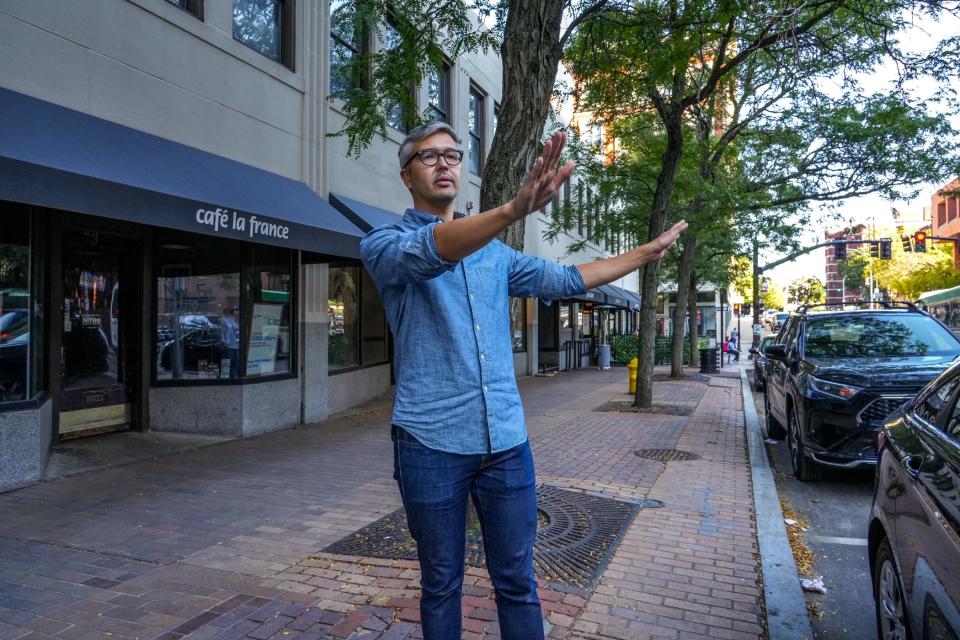
A thriving Chinese community used to exist when Empire Street was just a narrow lane downtown, in the shadow of where now Roger Williams University's downtown Providence campus stands.
Earlier this month, Yoo Warren opened an exhibit, “Seeing Providence Chinatown,” at the AS220 Aborn Gallery on Empire Street.
The initative: How the Providence Preservation Society will atone for 'racist practices'
The Empire remembered
Using photos and maps from archives, Yoo Warren, with skills he picked up as an architectural undergrad, has built an exhibit and a digital show to give visitors an idea of life on Empire Street — named for the long-gone Empire Theater — before it was widened and its history altered.
The plan: New Providence board weighs how to offer reparations, from housing to education
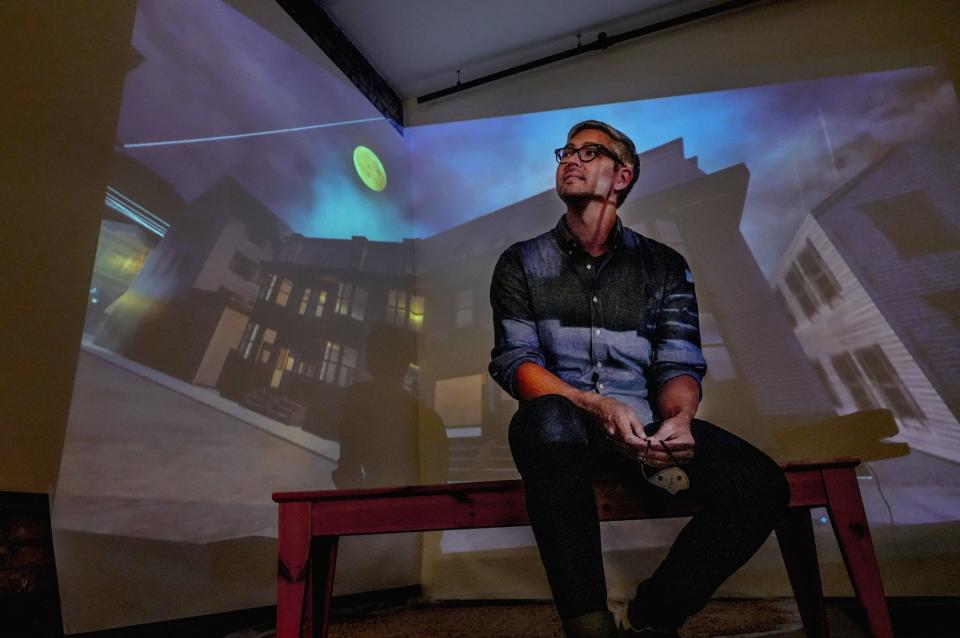
What remains as a testament to the men, women and children who carved out a life in Chinatown? Nothing.
You can walk up and down that stretch of Empire Street, and there is no marker or plaque embedded into the side of a building, which is out of character in a city so steeped in history.
Yoo Warren said recent excavation work along Westminster Street near Empire turned up pieces of bottles and other artifacts, but none of it can be directly traced back to the Chinese community. He ponders what one might find if Empire were dug up today.
Part of the exhibit is a pile of dirt from the neighborhood. Yoo Warren hopes one day to have it analyzed at the genetic level to see what telltale clues science can unveil about life in the area a century ago.
Welcome to Rhode I: VA student visits RI after an outpouring of kindness from our readers: Here's the story
“Literally, no one knew that this community lived here,” Yoo Warren said.
But, according to the research that Yoo Warren pulled together, between 1906 and 1917, about 300 Chinese people lived on Empire. The Chin, Lee and Quong families were among those who lived at 51. The On Leong Merchants Association, sort of a community service organization that helped businesses and families, set up shop at 55. There was a Chinese grocery and pharmacy at 61.
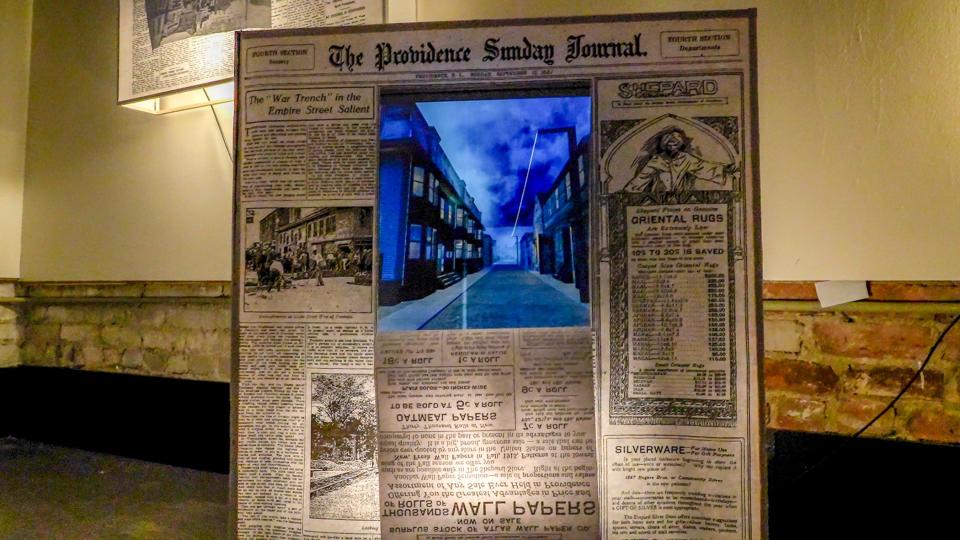
Some information from that era has been lost because of mistrust against Chinese immigrants.
"It was a racist custom not to name Chinese businesses, because back then it was thought to be unreliable information," Yoo Warren said.
As a Chinese American editor, I chuckled at the karma-like irony of the moment, since it's my duty to decide what information in this day and age is reliable or not.
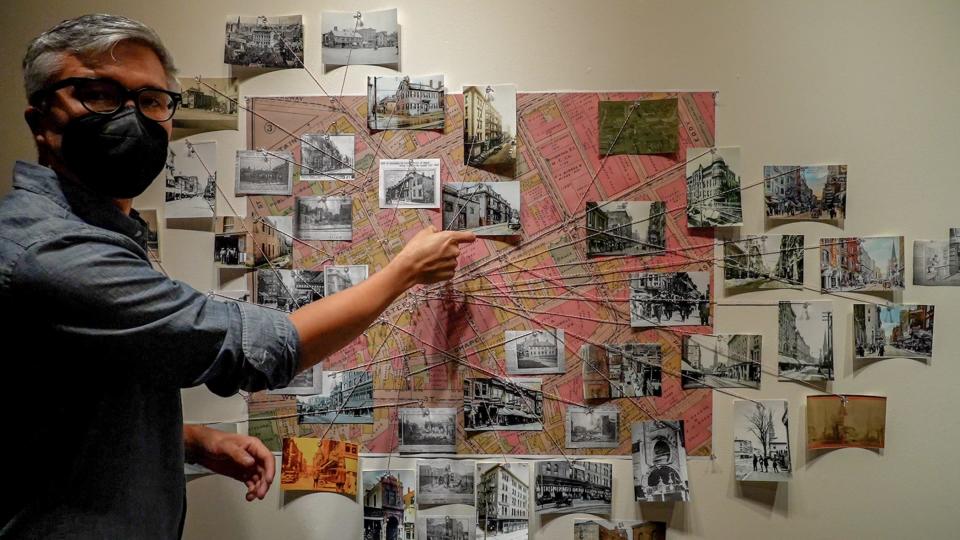
Of art and family scrapbooks
On the opening night of his exhibit, the visitors were a mix of people. For non-Asians, it was history told through art. But for the Chinese visitors, whether they were from Boston or New York, it was a family scrapbook.
"The kind of conversation I have with Asian Americans is profoundly different than when I have the same talk with whites," Yoo Warren told me. "It's a more personal connection."
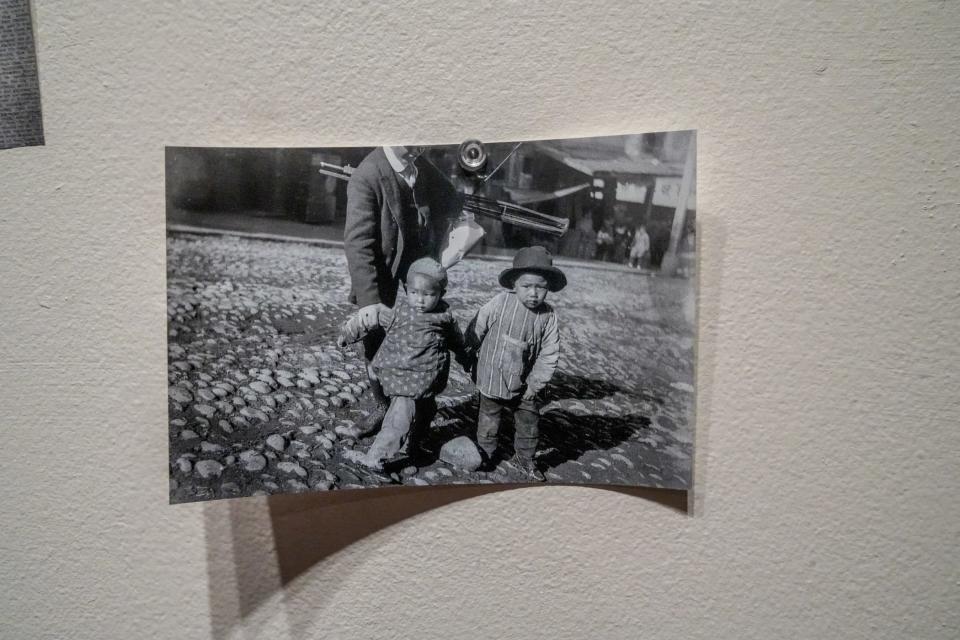
I thought about my Chinatown back in New York, where my family forged a life, but also the ones in London and Barcelona, and how their Chinese immigrants made a home in Europe instead of the Americas. And as I left the exhibit the other day, I realized that my world now had yet another Chinatown.
But this Chinatown was not defined by a street, or lined with restaurants and shops, but it was the Chinatown in my heart.
David Ng is executive editor of The Providence Journal. Email him at dng@providencejournal.com.
This article originally appeared on The Providence Journal: Providence's lost Chinatown is being reconstructed in digital exhibit

